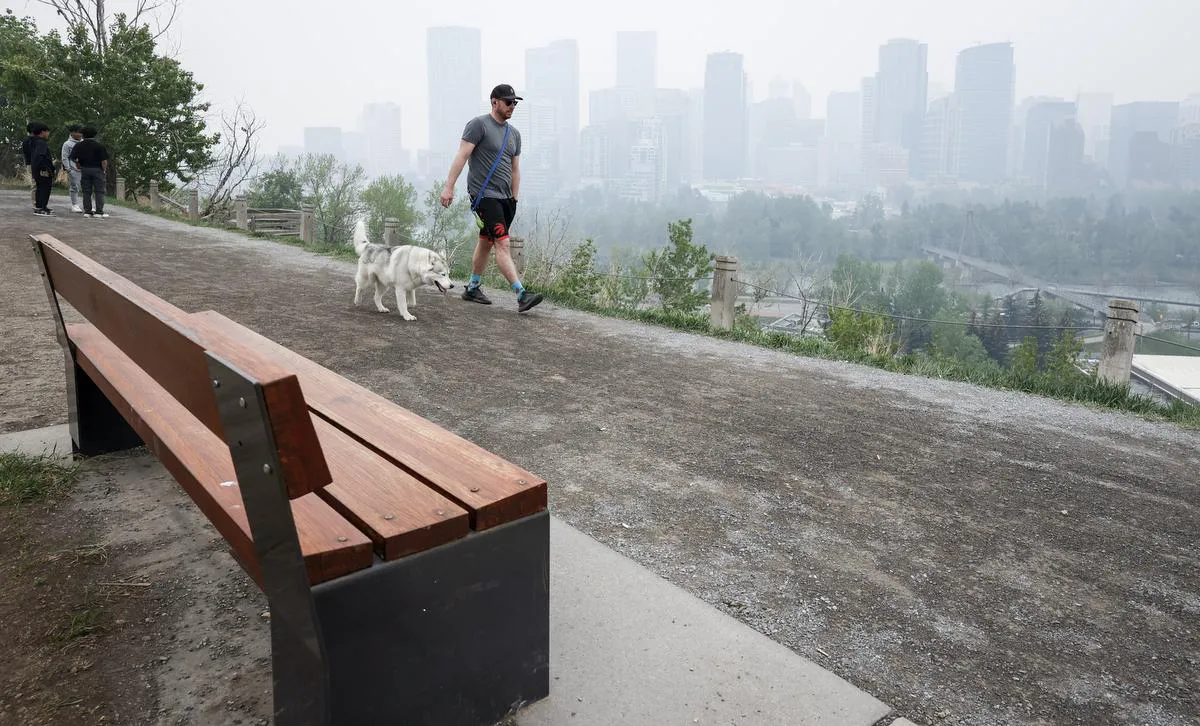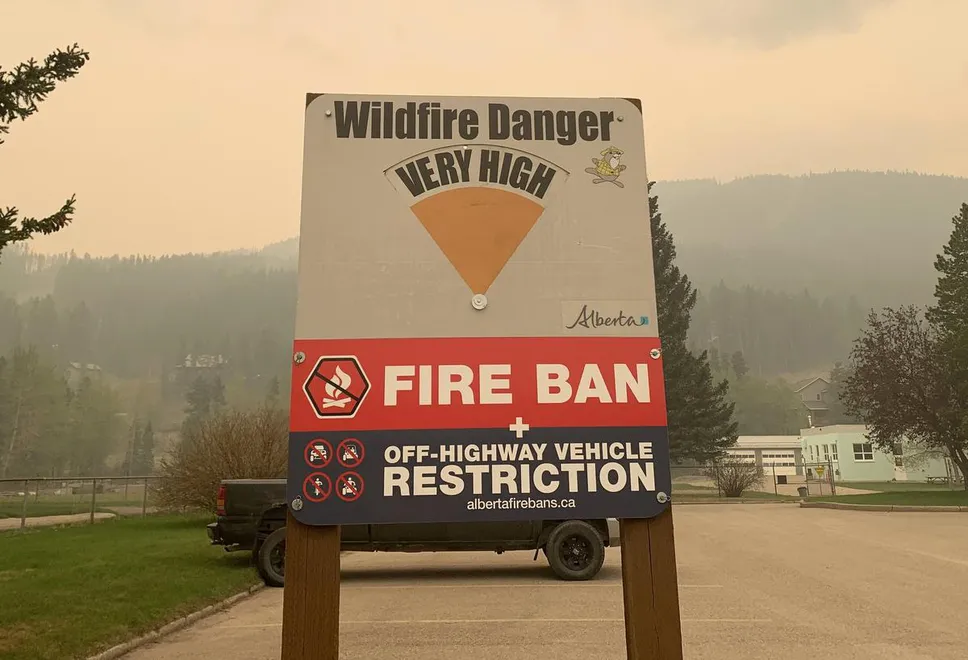CALGARY —You can tell it’s arrived as soon as you open your eyes to find the summer light muted, occasionally with a slight haze. Maybe you cough for no reason. A dull throb sets up shop just behind your temples.
Summers in Western Canada mean long days of sunshine, drives to the mountains and camping trips under the endless Prairie sky. But in recent years, they have also come to mean stretches of smoke; thick clots of ash and tiny bits of debris thrown up by wildfires that block the light and fill the lungs.
It’s a significant health hazard, particularly for the elderly, children and those with breathing conditions, and a harbinger of a changing climate to come. The skies take on a vaguely postapocalyptic orange glow, street lights flicker to life at noon and each breath burns.
But now, as is the Canadian way, the issue is getting unprecedented national attention. The smoke has arrived in Toronto.
In a coincidence no doubt very frustrating to some bureaucrats, somewhere, the smoke arrived Wednesday, on National Clean Air Day. It was just one of the cities on the East Coast, including New York, blanketed in an orange miasma, as Major League Baseball and the National Women’s Soccer League cancelled games in the U.S. and Ontario Premier Doug Ford urged people to forgo campfires.
Allow Western Canadians to introduce a few terms to the conversation, including “fire season,” the spring and early summer months in particular, after the snow melts but before plants “green up,” creating the tinder-box conditions for a blaze.
It’s challenging to describe just how bad the season been this year, spurred on by an unusually hot, dry spring, and it’s not even over.
More than 3.3 million hectares have burned so far in what is shaping up to be Canada’s worst fire season on record. It’s a metric that journalists usually convert to football fields to help readers visualize the scale of destruction, but picturing players running up and down five million pitches isn’t that much easier. It’s 13 times more scorched earth than is typical this time of year.
Your inner scientist may notice that some days the smoke-filtered sky is orange, while other times its closer to yellow or pink. The smell will seep into your clothes and ruin the taste of some wine. Some say the smell changes depending on what exactly is burning.
(To that end, while we don’t yet have the technology to report a smell, the smoke is currently billowing out of Quebec — home to roughly a third of the country’s active fires — through southern Ontario, down the eastern seaboard before coming back up to Newfoundland — meaning that smoke in New York may not be quite the ashy cocktail that Toronto’s is.)
Of course, where there’s smoke, there’s fire. Many people in Alberta and British Columbia are, unfortunately, familiar with the panic of packing up a life to flee fire. Many then watched with sympathy as thousands of Nova Scotians, battling one of its biggest fires on record, were forced to do so last week. The fear was palpable, as evidenced when people were all but banned from the woods.
There’s the Air Quality Health Index, which is often bad, and the dispiriting concept of a “smoke day,” when many outdoor sport leagues and children’s activities are cancelled, pandemic-style masks start to pop up again and even pets are supposed to stay inside.
It’s a metric westerners have become increasingly familiar with. Federal data on smoke dates back to 1952, and the last decade has seen a big increase. In Calgary, briefly the most polluted place on the planet in mid May, six of the last eight years have seen over 100 hours of smoke in the city, according to a CBC story.
Yes, fire has always been part of the landscape; flame even helps some types of plants and trees prosper and grow. But in recent years climate change has made fires bigger and more damaging.
On the flip side, when forests burn they release the carbon dioxide they normally store — in 2021, wildfires produced more greenhouse gases than the oil and gas sector and heavy industry combined.
Now, as smoke no doubt irritates the eyes and noses of many of the country’s lawmakers in Ottawa, it’s hard to deny the perils we’re enduring because of climate change. At a time when the effects of a shifting climate can feel intangible and far away, the smoke feels like a heavy-handed metaphor for the dark clouds coming our way.
In 2021, the year a climate-change fuelled fire wiped a B.C. village largely off the map, the city saw a record-breaking 500 hours of smoke, or almost three full weeks of living life in grey. The historical average from 1981 to 2000? Twelve hours of smoke.
Some have begun to make physical adaptations, from becoming familiar with online smoke reports, buying up air purifiers and air quality monitors, taping furnace filters to windows and wearing N95s. These are reasonable solutions — for people who can afford them.
Then there are the psychological adaptations. Rethinking booking outdoor trips during fire season, cutting biking or climbing days short when the smoke wafts in, or keeping the kids inside.
In short, reconsider what a Canadian summer can be.


